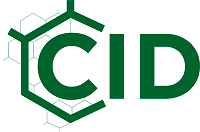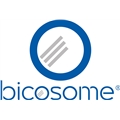Jordi Palau Capdevila (IDAEA) among the 24 early career scientists according to ACS publications

Environmental Science & Technology (ES&T) and Environmental Science & Technology Letters (ES&T Letters) are dedicated to publishing the most important, novel research across the full breadth of the environmental science and technology field. These journals recognizes the critical role that early career investigators play in discovering new phenomena and pioneering new approaches for solving old problems. In recognition of these contributions, the editors of ES&T and ES&T Letters have created an Early Career Scientists Virtual Issue, highlighting a select group of 24 outstanding researchers.
For each article in this Virtual Issue, a brief description of the research and its significance is provided by one of the journal’s Associate Editors, along with a link to each Early Career Scientist’s webpage.
The scope of the science and application in this Virtual Issue is truly representative of the inclusiveness and diversity which are just one of the hallmarks of ES&T and ES&T Letters. All of these articles represent important topics covered in the journals.
The Editors of ES&T and ES&T Letters hope this Virtual Issue will shine a light on rising Early Career Scientists, providing valuable contributions to the environmental science and technology field.
This research is part of that Jordi Palau Capdevila has been doing in recent years at IDAEA. Thomas Hofstetter, one of the 24 associated editors of the magazine, has chosen the article by Jordi Palau Capdevila and this is a short summary of the research carried out:
Distinct Dual C–Cl Isotope Fractionation Patterns during Anaerobic Biodegradation of 1,2-Dichloroethane: Potential To Characterize Microbial Degradation in the Field
Palau*, R. Yu, S. Hatijah Mortan, O. Shouakar-Stash, M. Rosell, D. L. Freedman, C. Sbarbati, S. Fiorenza, R. Aravena, E. Marco-Urrea, M. Elsner, A. Soler, and D. Hunkeler
Environ. Sci. Technol., 2017, 51 (5), pp 2685–2694
DOI: 10.1021/acs.est.6b04998
“It is well known that chlorohydrocarbons can be degraded by a variety microorganisms through different pathways thus making the monitoring of contaminant attenuation in the subsurface a major challenge. Palau et al. make an important step in the application of compound-specific isotope analysis – an approach used to identify chemical and biological reactions based on changes of stable isotope ratios in the residual contaminant – by showing how carbon and chlorine isotopes fractionate through reductive dichloroelimination reactions of 1,2-dichloroethane observed in microcosms experiments and anoxic groundwaters. The proposed stable isotope indicator has a notable potential to reveal subtle differences in the mechanisms of enzyme-catalyzed reductive dechlorinations as well as the activity of contaminant-degrading bacteria.”
-Thomas Hofstetter, Associate Editor
![]() ES&T and ES&T Letters Virtual Issue by ACS: Early Career Scientists
ES&T and ES&T Letters Virtual Issue by ACS: Early Career Scientists










